
How to Use KY-032 Infrared Obstacle Avoidance Sensor Module: Examples, Pinouts, and Specs
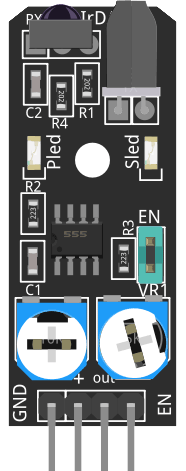
 Design with KY-032 Infrared Obstacle Avoidance Sensor Module in Cirkit Designer
Design with KY-032 Infrared Obstacle Avoidance Sensor Module in Cirkit DesignerIntroduction
The KY-032 Infrared Obstacle Avoidance Sensor Module is an electronic device that utilizes infrared technology to detect the presence of obstacles in its proximity. It is widely used in robotics, automated vehicles, and various DIY projects for navigation and collision avoidance purposes. The sensor operates by emitting an infrared signal and then detecting the reflection of this signal off an object in its path.
Explore Projects Built with KY-032 Infrared Obstacle Avoidance Sensor Module
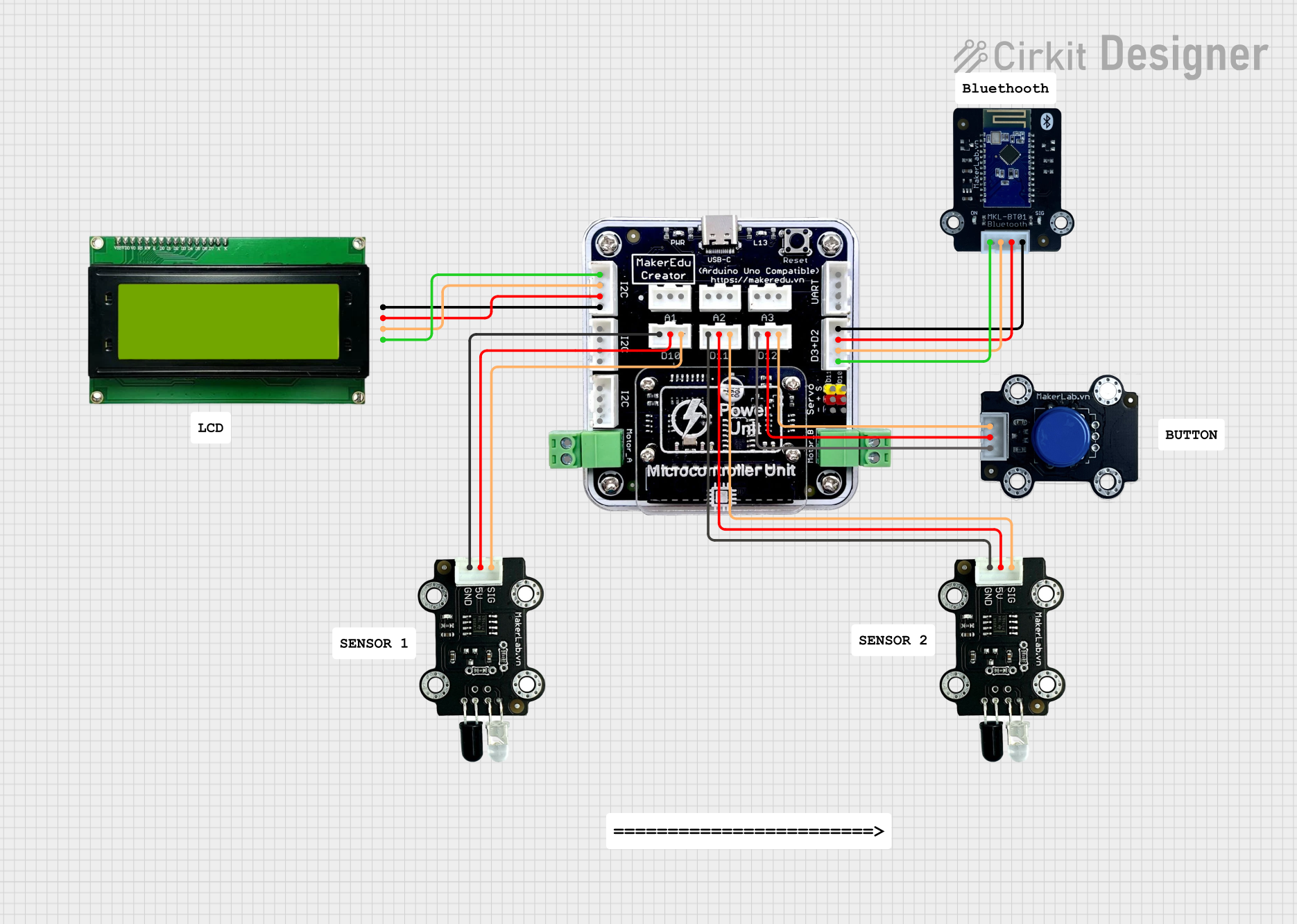
 Open Project in Cirkit Designer
Open Project in Cirkit Designer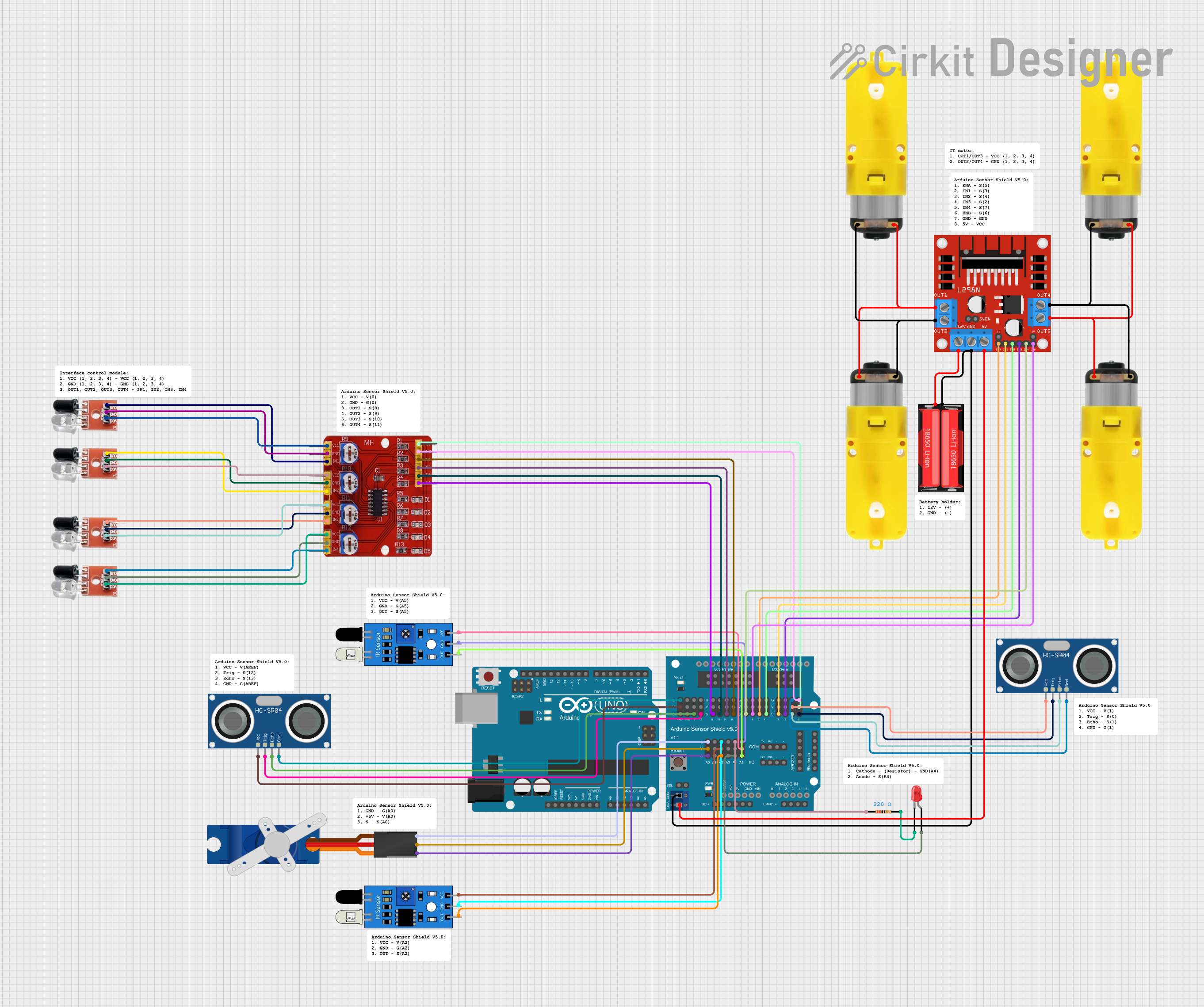
 Open Project in Cirkit Designer
Open Project in Cirkit Designer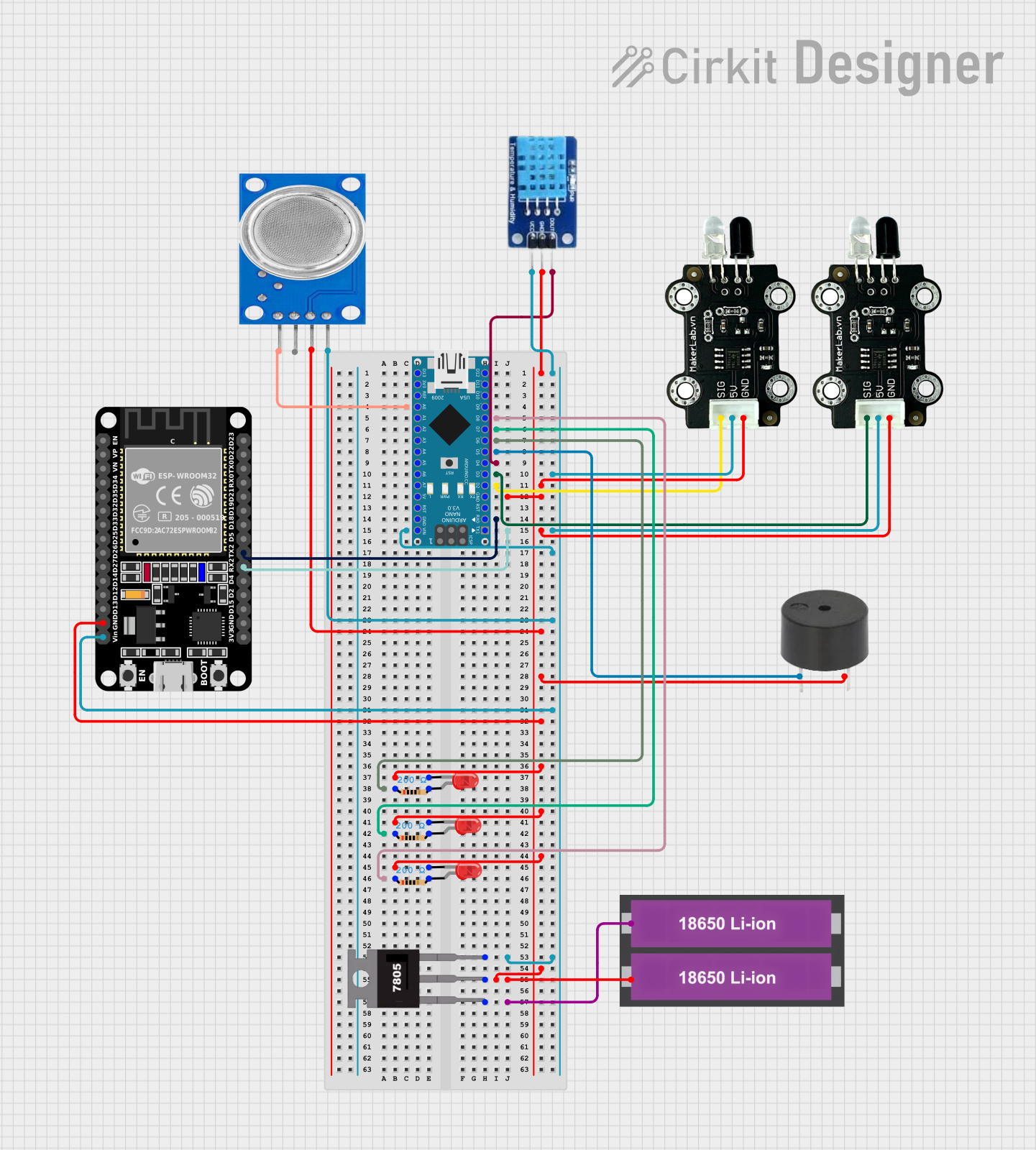
 Open Project in Cirkit Designer
Open Project in Cirkit Designer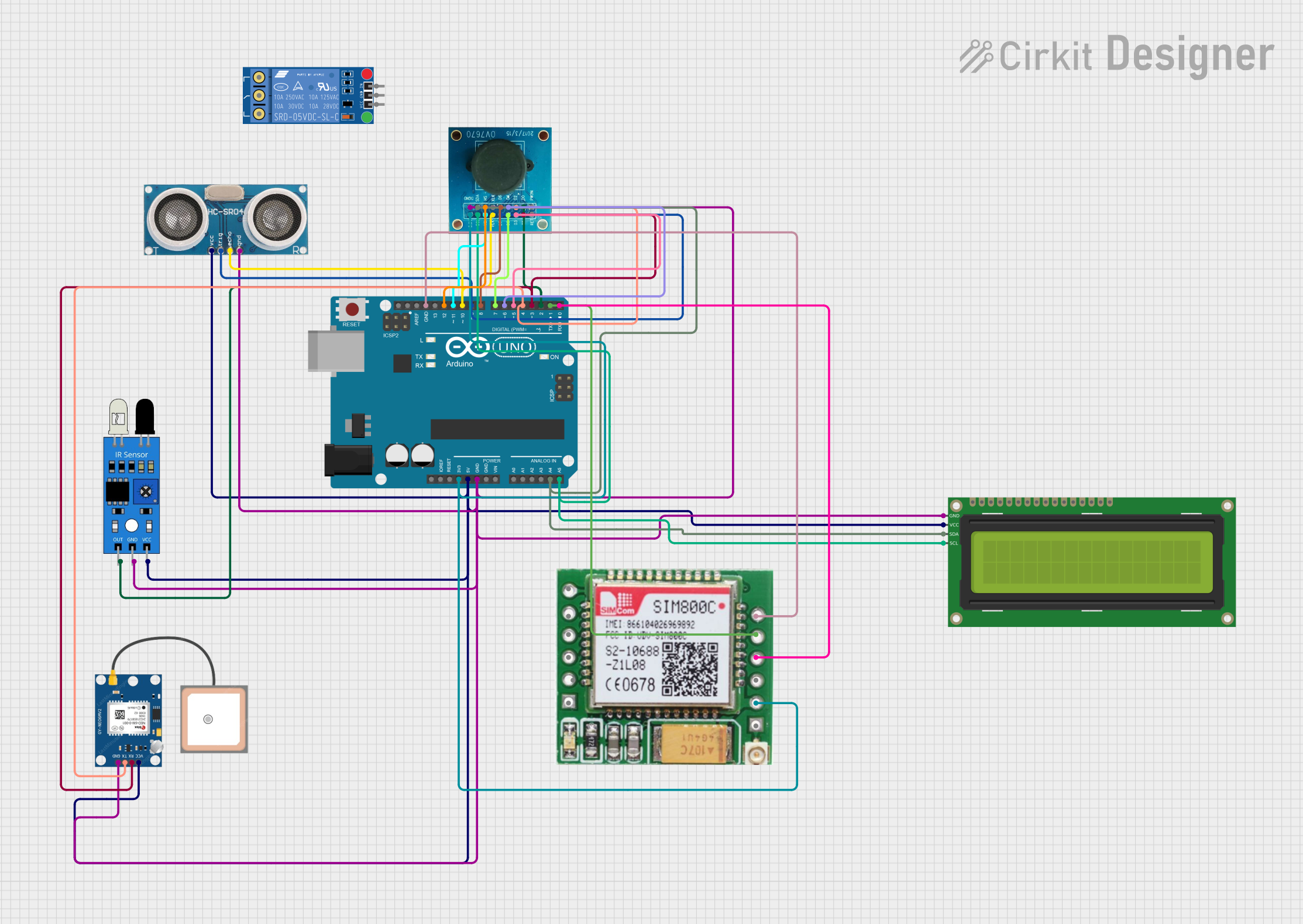
 Open Project in Cirkit Designer
Open Project in Cirkit DesignerExplore Projects Built with KY-032 Infrared Obstacle Avoidance Sensor Module

 Open Project in Cirkit Designer
Open Project in Cirkit Designer
 Open Project in Cirkit Designer
Open Project in Cirkit Designer
 Open Project in Cirkit Designer
Open Project in Cirkit Designer
 Open Project in Cirkit Designer
Open Project in Cirkit DesignerCommon Applications and Use Cases
- Robotics: Obstacle detection and avoidance
- Automated guided vehicles (AGVs): Path navigation
- Interactive installations: Movement or presence detection
- Home automation: Security and monitoring systems
Technical Specifications
Key Technical Details
- Operating Voltage: 3.3V to 5V DC
- Current Consumption: 20mA
- Detection Distance: 2cm to 40cm (adjustable)
- Sensor Angle: 35°
- Output Type: Digital signal (0V or 5V)
Pin Configuration and Descriptions
| Pin | Description |
|---|---|
| VCC | Connect to 3.3V-5V power supply |
| GND | Connect to ground |
| OUT | Digital output signal (connect to microcontroller I/O pin) |
| EN | Enable pin (optional use to enable/disable the sensor) |
Usage Instructions
How to Use the Component in a Circuit
- Connect the VCC pin to a 3.3V-5V power supply.
- Connect the GND pin to the ground of the power supply.
- Connect the OUT pin to a digital input pin on a microcontroller, such as an Arduino.
- (Optional) Connect the EN pin to a digital output pin on the microcontroller if you wish to control the enabling of the sensor programmatically.
Important Considerations and Best Practices
- Ensure that the sensor is mounted securely and that its path is unobstructed for accurate detection.
- Adjust the onboard potentiometer to calibrate the detection distance as per your requirements.
- Avoid exposing the sensor to direct sunlight or other strong infrared sources to prevent false detections.
- Use pull-up or pull-down resistors on the OUT pin if required by your microcontroller's input pin specifications.
Example Code for Arduino UNO
// Define the KY-032 sensor output pin
const int obstacleSensorPin = 2;
void setup() {
pinMode(obstacleSensorPin, INPUT); // Set the sensor pin as input
Serial.begin(9600); // Start serial communication
}
void loop() {
int sensorValue = digitalRead(obstacleSensorPin); // Read the sensor value
if (sensorValue == LOW) { // Check if an obstacle is detected
Serial.println("Obstacle detected!");
} else {
Serial.println("Path is clear.");
}
delay(200); // Short delay before next reading
}
Troubleshooting and FAQs
Common Issues Users Might Face
- Inconsistent Detection: If the sensor is giving inconsistent results, try adjusting the potentiometer to calibrate the detection distance.
- No Output Signal: Ensure that the power supply is connected correctly and that the voltage levels are within the specified range. Also, check the connections to the microcontroller.
Solutions and Tips for Troubleshooting
- Calibration: Use a small screwdriver to adjust the onboard potentiometer until the desired detection range is achieved.
- Wiring Check: Double-check all connections, especially the VCC and GND pins, to ensure they are secure and correctly wired.
- Avoid Interference: Keep the sensor away from other infrared-emitting sources to prevent interference.
FAQs
Q: Can the sensor detect all types of materials? A: The sensor is most effective with objects that reflect infrared well. Some materials, especially those that are shiny or transparent, may not be detected as reliably.
Q: How can I extend the detection range of the sensor? A: The detection range can be adjusted using the onboard potentiometer. However, the maximum effective range is about 40cm.
Q: Is it possible to use multiple KY-032 sensors together? A: Yes, you can use multiple sensors in a project. Ensure that each sensor's output pin is connected to a separate digital input pin on the microcontroller.
Q: What should I do if the sensor is always indicating an obstacle, even when there is none? A: This could be due to interference from other infrared sources or incorrect calibration. Adjust the potentiometer and ensure the sensor is not facing any strong infrared-emitting sources.